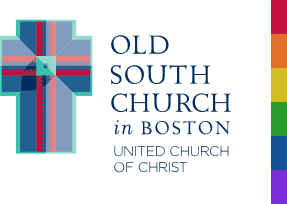Some might ask: “Why do you keep at it, adding more new verses to a beloved Holy Week Hymn? Just let it be and let’s sing it and feel the emotion it evokes.” My response is simple: because it matters.
The hymn Were You There? is a wonderful old spiritual. Indeed, it is very emotive as we sing it during Holy Week. It has been sung for decades in churches and in homes, and hummed as an act of remembrance and devotion during the Lenten season by countless others, including me.
Were you there when they crucified my Lord?
Were you there when they crucified my Lord?
O sometimes it causes me to tremble, tremble, tremble.
Were you there when they crucified my Lord?
There is at least one additional verse to this hymn. The New Century Hymnal, for example, omits the verse Were you there when they laid him in the tomb? but adds a resurrection verse that really should not be there: Were you there when he rose up from the tomb? It’s a Good Friday hymn; not an Easter hymn.
But as moving as it may be, the hymn does not contain one word about the continued crucifixion of Jesus in the years following his death or in the generations since then. We can sing it, along with other hymns, and have tears come to our eyes yet miss the ramifications of his death. The Roman Empire killed him because he preached and lived the Kingdom of God. His very life was a repudiation of the empire’s subjugation of God’s people. To us, however, the words evoke deep sorrow (primarily for our personal sins) for what happened on a hill outside Jerusalem in approximately 33CE, but takes no note of the Roman Empire’s cruelty and lack of compassion in Jesus’ day or in our own nation during this very Lenten season.
I realize it is hard to enumerate current problems in hymns that are written and then printed in hymnals at a particular time. But some broad categories might help: ‘domination systems’; the plight of the poor; demeaning of immigrants; the misuse of the earth; the maltreatment of one group over another based on gender, race or sexual preference and so on. These categories, alas, are ongoing and new verses added to some of our hymns would help us see more clearly the tasks before us. Indeed, some hymns attempt to do just that. Blessings to those musicians and hymn writers who are so engaged.
In any case, while there will be many opinions on all of this, I have again written some new verses to this old spiritual. I admit that some do not make for good poetry but I think they make for good prophetic theology especially in addressing the deep trouble our nation is currently facing.
- Were you there when the pipeline was reapproved?
- Were you there when ‘groping’ was deemed as fun?
- Were you there when the ‘undocumented’ feared for safety?
- Were you there when white supremacists set the tone?
- Were you there when earth-care no longer mattered?
- Were you there when public schools were viewed obsolete?
- Were you there when Muslim refugees were banned?
- Were you there when ‘health care for all’ was maligned?
O sometimes it causes me to tremble, tremble, tremble.
We are here as our Lord is crucified yet again.
When Jesus rode into Jerusalem on Palm Sunday he was confronting, non-violently, a corrupt and cruel political system in which occupation, brutality, and discrimination were the order of the day. And to it all he said an emphatic ‘no’! His actions were a political statement. It certainly causes me to tremble when I think of his courage to continue to testify to the Kingdom of God even to the point of arrest, humiliation, and execution.
With the addition of some contemporary verses this old hymn can help us examine our own courage in confronting the evils of our day. As I sing it this year, I will quietly add in some of these verses. What verses might you add? I will sing it with a renewed commitment to the pursuit of God’s compassion and justice in today’s world. Will you join me?







